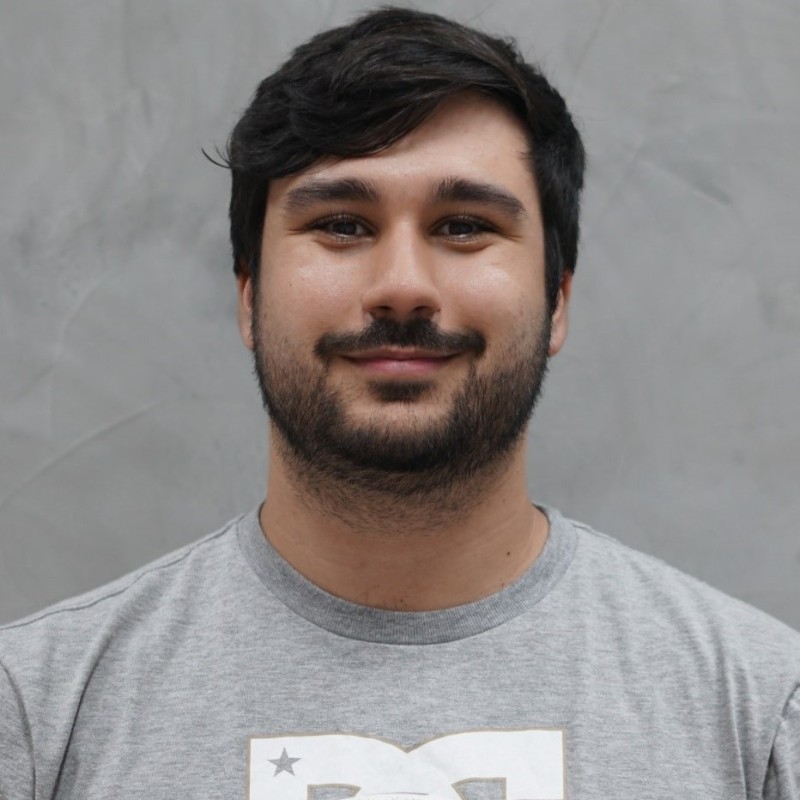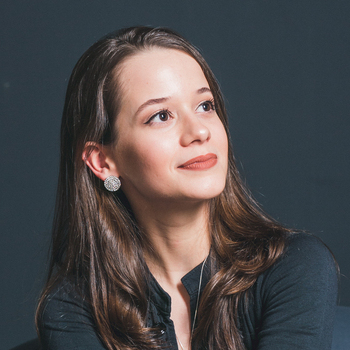
After ten years of experience in this field and over the course of five years as a Product Design Manager, I have had, many times, the responsibility of recruiting, evaluating, and hiring designers to work on my team. During the process, I noticed that a lot of candidates that seemed to have the potential for the job opportunity failed a few points that were hard for me to ignore.
Specifically in Brazil, during the crisis we are currently facing, I feel sad when I have to decline some people who need work but don’t get the job due to small mistakes that could easily be avoided. Since some guidance could change this, I decided to write this article with tips to help everyone improve this non-teachable skill.
The topics may seem a little obvious, and if they are, then good for you! But believe me, everything that you are about to read is based on real hiring experiences at all levels, from internship programs to senior positions. So, here we go…
Curriculum
The objective of the Curriculum is for us to understand your background and know how you got to the point of applying for the job. Some companies use only the LinkedIn profile to do that, but others still ask for it as a document. No matter the format, the important thing to have in mind is that the information it contains must be truthful, direct, and clear because different people in the company will check it, such as HR, Directors, and, of course, Designers.
Top 5 tips:
1. Add your e-mail and portfolio link to your LinkedIn profile
When searching for candidates on LinkedIn, I always find it difficult to reach them quickly. Given how messaging works there, after sending a connection request, there’s a waiting time before you can actually talk. One way to simplify that, if you need to find a job fast, is to write your e-mail address on your profile description. And if you want to make the process even faster and easier for the recruiter, also put your portfolio link in there because this will probably be the first thing they will ask you after getting in touch.
2. Don’t elaborate that much
For quite some time now, it’s a trend to create innovative ways to layout curriculums. Infographics, timelines, tag clouds, mood icons, and a lot of other out-of-the-box stuff have spread as a good way to start showing your design work. Unfortunately, most of the time, I must disagree with that because, in reality, what happens is that designers are forcing themselves to do that as if it was a mandatory skill.
It ends up showing that they don’t have enough experience, either to make it look good and consistent with their portfolio work or worse, to make it easy for others to understand. If you leave the function of a product behind its form, you’re breaking the first design rule. So, if you don’t have time or are still insecure about doing it well, don’t do it. Keep it simple, and remember that you can improve it along the way. A minimalist page with plain text will do better for me in this case because, as I said, it needs to be direct and clear, that’s all.
3. Add your portfolio clickable link or QR Code to the CV
We’re talking about a user experience job, right? So, as I mentioned in both items above, the least you can do is give your future boss a satisfying experience by finding and getting to know you. Sending a curriculum as a JPEG image is not the way to do that. Instead, try something that can at least be interacted with, like a text file or a PDF, where you can add links or even a small QR code to the portfolio. The important thing is to quickly direct the person who might hire you to your work cases. Just don’t make him/her type the link in a browser.
4. Don’t add or give the same importance to secondary activities
Another thing that may confuse recruiters is when candidates list side activities along with college graduations and work experience. For some companies, a degree is required for hiring.
With the infinity of online courses nowadays, it is important to use hierarchy concepts to convey the appropriate weight for each kind of educational experience. The same applies to attended events and voluntary work, and don’t even bother adding them if they don’t relate to that job or that company’s market area. It’s just not going to make a difference.
5. Communicate in a standard formal way
When writing an e-mail or message to the employer, avoid super informal terms like “dude” or “ain’t.” Of course, you don’t need to use scholarly language. After all, design positions are usually more liberal.
But please, don’t forget it is still a professional conversation. The way you communicate can tell a lot about how serious you handle your work and how much you respect other co-workers.
Portfolio / Case
To present a good portfolio, it doesn’t need to be an amazing pyrotechnic show. It just needs to be accessible and reveal what matters to the recruiter, which is what you’ve accomplished so far, so he/she can project what you’re capable of doing in the future.
I’ve seen all kinds of stuff: websites, videos, apps, PDFs, PPTs, even just images attached to the e-mail. Everybody knows that sometimes you’re so full of work you might not have the time to put together something better. Really, it’s ok. It doesn’t matter how I access it, as long as it’s easy and provides good content.
Top 5 tips:
1. Be careful with details
Watch out! When I say no matter how you present it, I’m not suggesting you should be careless. On the contrary, paying attention to details is very important for any profession, not only for product designers (you can read more about it in this other article I wrote).
But if you’re applying for a job opening in this field, please, don’t send clues to your possible future boss that you’re a negligent designer. Basically, work on your portfolio as you would work on a project for a client, that is: don’t use poor quality images; don’t forget to respect grids and alignments; review everything you write to avoid misspellings or mistyping, etc.
2. Show your process and the background work
People are used to thinking that beautiful images and great UI screens are exclusively what impresses us in a portfolio. Get over it if you want to be a product designer! We’re also the ones who do the dirty work of research, information architecture, copywriting, among many other things. That is why, beyond the layouts, you should also explain the process you used to get to that nice result (see a good example of it in this article).
A good product designer focuses more on the WHYs and HOWs than on the WHATs, so don’t be shy and show everyone the process and those ugly flowcharts and sketches you made. This can better prove that you have the right mindset and experience for the job.
3. Don’t display old work; show only good and relevant cases
It is also common to receive Portfolios containing a lot of work that has been done through all candidate’s work life, but the fact is that each project you work on makes you evolve and get better at it, so why show this bad past when you can only provide your good present? In the product design world, everything changes very quickly—styles, user behavior, interaction, and navigation patterns.
Therefore, filling your portfolio with old projects puts you at risk of having your skills or decisions questioned. To keep an older project, make sure it’s still relevant (a consolidated product and/or seen as a reference for others). The same reasoning applies to cases from fields that are not linked to the vacancy in question since they can cause the impression that your focus as a professional is on skills that may not be important to that company. Remember: it is preferable to have a single current and relevant case than a big list of unrelated and outdated work.
4. Describe exactly what you have done during the project
Design projects are often complex and involve different types of skills and people from various profiles and areas. If you expose a case on your portfolio without describing your actual participation in it, two possible scenarios can happen: the recruiter may interpret that you were responsible for everything (and he/she can question you or see you accountable for the whole process), or worse, think that you may be trying to get credit for other people’s work.
Being specific about your role during a project and how you collaborated with others, however minimal it was, helps us understand what kind of professional you are, what kind of skills you are better at, and can reflect how you work on a team. These are important assumptions to state if you really fit that job opening and the company culture.
5. Invest in storytelling and be brief on the descriptions
Recruiters are professionals exposed to a huge number of profiles daily. Long and unnecessarily elaborate texts will not increase your chances to succeed in the hiring process. On the contrary, it will make them spend more time than they wish to evaluate your work.
The description of a project should always tell the story of that case succinctly: presenting the problem and its context, how you did the work and in what stages, what obstacles and challenges were faced, and the final result (what was delivered and the impact it generated for the business). Also, try to balance the number of texts, images, and white spaces as you would on the project itself. Remember that there’s a person (a user) consuming that content, so it must be an easy and pleasant journey.
Interview
Finally, after you presented both items above, your potential future boss will probably call you for an interview. This is the moment to prove face to face, even by video conference, what you are capable of, but most importantly, to show who you are. Even though it is tempting to convince him/her that you’re the perfect candidate for the job (maybe even you will realize it’s not a match later), no words or attitudes will do this better than just being yourself. Being honest, humble, and respectful will always surpass that almost arrogant self-promotion attitude I know you’ve seen around.
Top 5 tips:
1. Get to know the company and its products before the interview
If you intend to work in that company for the next years of your life, the least you can do is get to know exactly what you’ll be working with. Doing a little research about the company’s culture and goals and about the products it delivers is highly encouraged for you to not only be sure that this is what you want for your career but also to reveal your interest on the matter, preventing you from being caught by surprise if a question about them pops up. If possible, even try to use the products and develop opinions about them.
Don’t be afraid to say what you think about the product, and even if you don’t like something, it is always good to hear feedback (I hope this applies to every company), as long as it comes with a suggestion of how you think they should improve it.
2. Be punctual
I don’t think I even need to explain this one, but anyway: not being on time for the interview shows that you don’t care and that you’re disrespectful to the person that is considering hiring you. We know unforeseen problems can happen, so please make sure you notify who is in contact with you as soon as possible if something that will delay you (or prevent you from attending) comes up. This integrity attitude is what we should expect from everyone on both sides.
3. Don’t lie if you don’t know something
This is probably the most sensitive topic because there’s nothing I think discredits a candidate more than when I find out he/she lied to look good. Believe me, most of the time, the recruiters know you’re lying, especially if they ask follow-up questions.
The only good you’re doing to yourself by lying is saving time by being kicked out of the selection process sooner. And if you pass, make sure you can get up to that before anyone finds out, or I will remember you for this. Mean talk apart, be honest! There’s nothing wrong with saying you don’t know something, quite the opposite, it will show that you are humble, have integrity, and are open to learning.
4. Don’t use qualities as your weaknesses
Being a perfectionist is not a weakness. It is just like any good quality that, in excess, becomes something bad. When speaking about things that you can be better at technically or behaviorally, be straightforward for the same reasons you shouldn’t lie. When this kind of question is asked, the truth is we want to know if you are capable of exercising self-criticism and acknowledging skills that you can improve. It will not be the reason you’re declined.
5. Don’t bring political bias to the conversation
Like religion, gossip, or personal issues, political vision is a matter that you shouldn’t address in a work environment. During the interview, it is no different. This kind of subject, even if just insinuated, is never relevant during a hiring process. It only makes everyone uncomfortable. Many designers present cases with political goals, especially in the current polarized scenario, and it’s ok to do so, as long as the focus is on the design work done and not on beliefs or positioning.
I hope this has been useful for everybody looking for a job. Good luck!
















